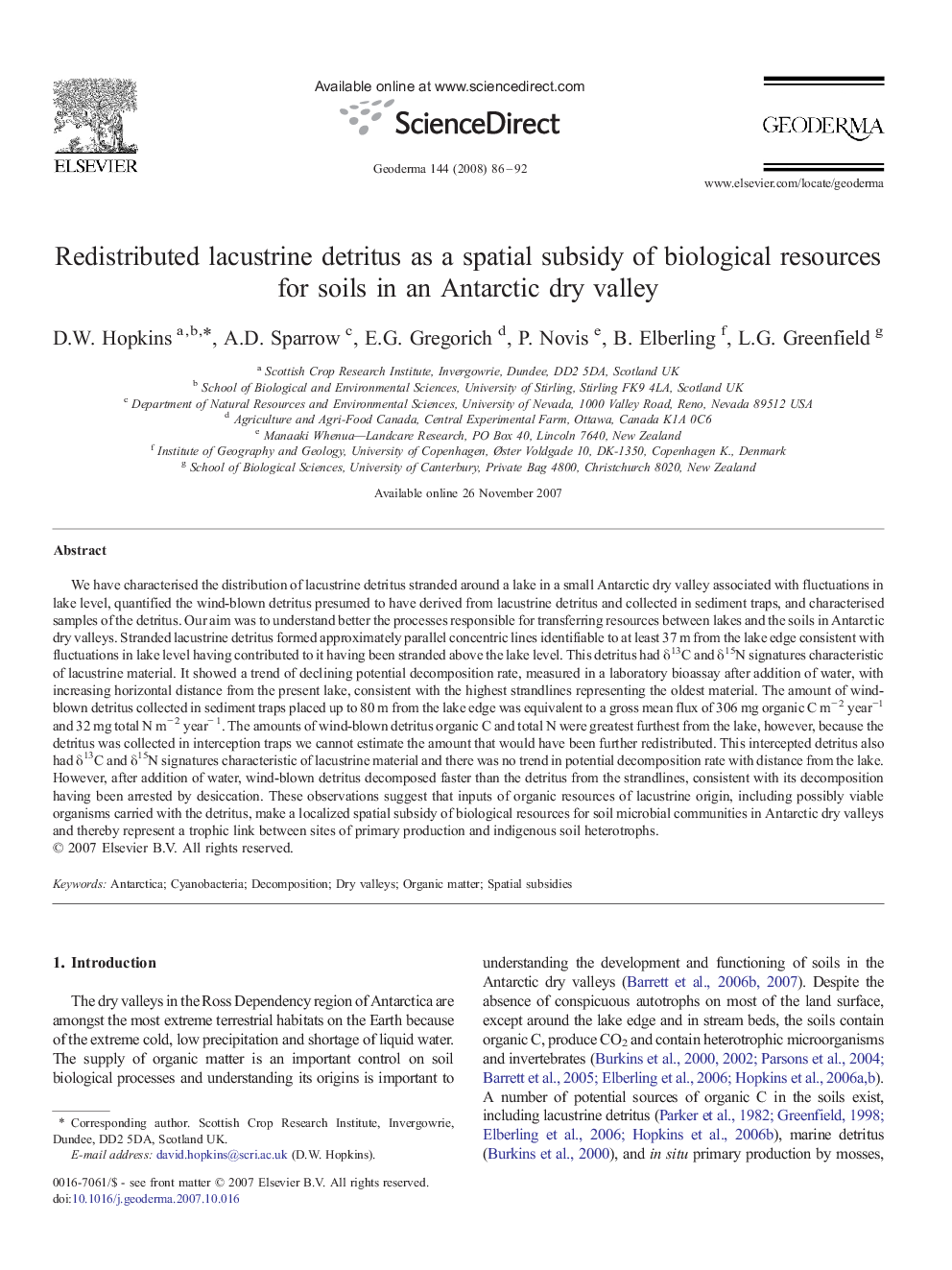| Article ID | Journal | Published Year | Pages | File Type |
|---|---|---|---|---|
| 4575210 | Geoderma | 2008 | 7 Pages |
We have characterised the distribution of lacustrine detritus stranded around a lake in a small Antarctic dry valley associated with fluctuations in lake level, quantified the wind-blown detritus presumed to have derived from lacustrine detritus and collected in sediment traps, and characterised samples of the detritus. Our aim was to understand better the processes responsible for transferring resources between lakes and the soils in Antarctic dry valleys. Stranded lacustrine detritus formed approximately parallel concentric lines identifiable to at least 37 m from the lake edge consistent with fluctuations in lake level having contributed to it having been stranded above the lake level. This detritus had δ13C and δ15N signatures characteristic of lacustrine material. It showed a trend of declining potential decomposition rate, measured in a laboratory bioassay after addition of water, with increasing horizontal distance from the present lake, consistent with the highest strandlines representing the oldest material. The amount of wind-blown detritus collected in sediment traps placed up to 80 m from the lake edge was equivalent to a gross mean flux of 306 mg organic C m− 2 year−1 and 32 mg total N m− 2 year− 1. The amounts of wind-blown detritus organic C and total N were greatest furthest from the lake, however, because the detritus was collected in interception traps we cannot estimate the amount that would have been further redistributed. This intercepted detritus also had δ13C and δ15N signatures characteristic of lacustrine material and there was no trend in potential decomposition rate with distance from the lake. However, after addition of water, wind-blown detritus decomposed faster than the detritus from the strandlines, consistent with its decomposition having been arrested by desiccation. These observations suggest that inputs of organic resources of lacustrine origin, including possibly viable organisms carried with the detritus, make a localized spatial subsidy of biological resources for soil microbial communities in Antarctic dry valleys and thereby represent a trophic link between sites of primary production and indigenous soil heterotrophs.
